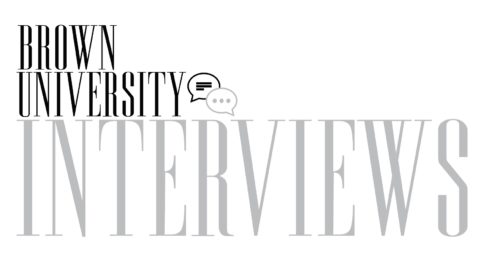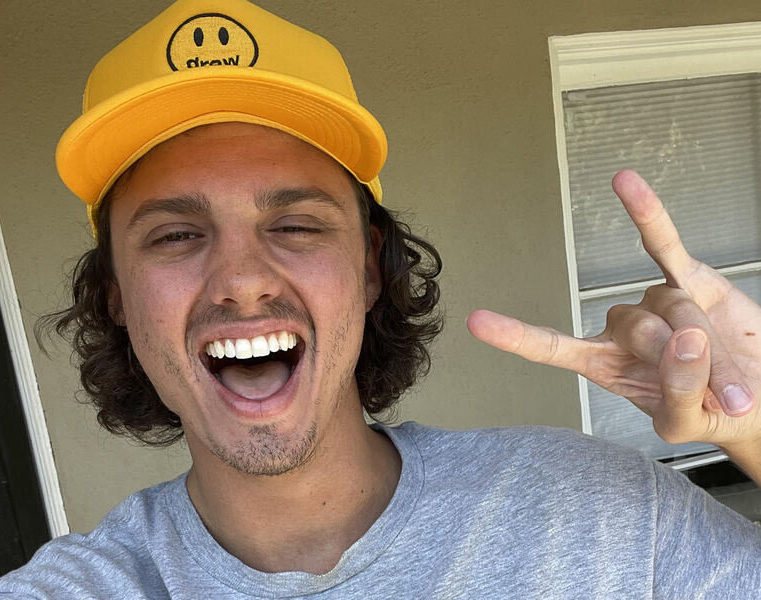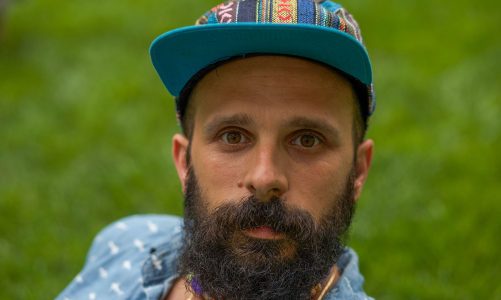
The Premier Lacrosse League (PLL) has revolutionized the sport of lacrosse. Though changes to the game’s rules to make the sport faster and more accessible have occurred, the most notable change has been in how the league is marketed. From a weekly vlog showcasing the cast of characters the league has to offer to an Instagram following of roughly 270,000 followers, the media presence surrounding the sport has grown it exponentially. In addition to the typical players’ salary, the PLL has also revolutionized the accessibility of league play by giving players equity shares in the business. Behind this media push is RJ Kaminski, Senior Manager of Brand for The Premier Lacrosse League. RJ sat down with Brown Interviews to discuss the success of the lacrosse world’s rebranding, as well as the inner workings of running a sports league.
Evan Stein: The Premier Lacrosse League (PLL) has really grown the sport a ton and a huge portion of that is due to the league’s social media presence. Through highlighting the personalities of characters around the league and having the players’ Instagram handles on the backs of their jerseys during the all-star game, your team has done a phenomenal job at socializing the sport of lacrosse. Can you take me through your approach to socializing a professional sports league, something that actively resists goofing off and having fun?
RJ Kaminski: In the past, a lot of the stories of lacrosse athletes haven’t been told, so when we launched the PLL, we wanted to create a huge emphasis on showcasing these players off the field. A big way we pulled that off was investing in a large-scale media and marketing team that’s going to put these players on camera, catch them on film, make them look larger than life, and make them look like the professional athletes, role models, and heroes that they are. Another factor is our business model, where our players are stake-holders in the league. They’re getting paid a wage much higher than professional lacrosse players have ever been able to earn in the past and because of this, the players are bought in. So when you marry our compounding internal resources to build up this large scale media and marketing team with buy-in from the players, you have a really successful formula for developing new fans by showcasing these players in the way they deserve to be showcased.
So the players want to be well-rounded because it not only benefits them, but it benefits the league and because they own a part of the league that is reflected in their pocket?
Absolutely man! And at the end of the day, it makes them look cool. In the past, professional lacrosse players didn’t have their friends watching them on the weekend because the games were tougher to watch. Now they can just tune into NBC Sports or Peacock and watch on a weekly basis. There’s just a lot more visibility and the players are more proud to showcase that they’re professional lacrosse players because of it. We’ve cracked into the mainstream a bit more in the league’s three year history than pro lacrosse had done previously.
How do you go about capturing the personality of these players through the weekly vlogs and social media?
It’s just about finding the proper way to cover them. Covering a guy like Lyle Thompson is a lot different than covering a guy like Matt Rambo. There are so many different skill levels and personalities in this league so we as a media team have to take a step back, meet internally, and discuss how we should promote players across social media. That’s a win for us. We have such a diverse pool of players with various backgrounds, cultures, interests. When we meet to discuss these things, we’ll decide it’s much better to show some players in one light and other players in another.
Some will like a Matt Rambo, where fans will take to his personality off the field once they see his mic’d up commentary or jokes in the huddle. Another fan who hasn’t been exposed to lacrosse before might see the story of someone like Romar Dennis, who has a very unique background, and be like “Wow. I look like Romar Dennis. I have a similar story to him. I am going to tune in when his team, the Atlas, plays.” The overall goal is to attract net-new fans. It’s just about coming up with the proper strategy and leaning in where it feels appropriate because these guys are all so different.
I see that. I see people like Lyle Thompson all over the PLL Instagram page with his highlights. Lyle is one of the best lacrosse players ever yet he wasn’t in the vlog until week five or so. It’s not due to negligence. It’s strategic.
I think being thoughtful is a good way to put it. Lyle is arguably the best player in the world but he’s got a very very calm demeanor. Does that really fit the vlog context? Do we want to showcase Lyle joking around in the huddle? Probably not because he doesn’t do that very much. He’s a fantastic dude but he’s very different from a Matt Rambo or a Myles Jones who are incredibly comfortable on camera and want to joke around in the locker room. There’s certain things we know internally that dictate how we showcase players. Lyle is an important name in the league though, so when we want to showcase him, we showcase him in a more formal sit-down interview setting. It’s more his taste [and] more his style.
I love how the PLL is so colorful and flashy. With the bright yellow shield, the colorful helmets and uniforms, merch partnerships with brands like Champion, can you take me through the branding of something like the PLL and how that applies to the demographic you’re targeting with the league?
I wish I was in the room when we were discussing these original brand identities and rolling them out. I have a good grasp on why we went in certain directions with various teams but the one thing I will note is that from the day we launched these brand identities, people jumped on team logos and names to try to trash them. To be fair, we took some risks. The Whipsnakes? That is a crazy name for a team but it is one that was a massive win. Now it’s totally normal. I’ll walk into a bar and hear someone say, “Can you put on the Whipsnakes game?” It blows my mind because that was originally just a team name that was batted around that people thought was crazy. It certainly got a lot of hate on social media when we rolled it out but now it’s a common name in the lacrosse world.
In terms of the colors and branding, I think you have to go bold in order to attract fans that might be on the fence and in order to catch their attention. We’re competing with the core four sports leagues and beyond. In entertainment as a whole, there’s so much going on, so we have to do whatever we can to capture eyeballs for even two or three seconds. If the branding and thoughtfulness put into our team names and uniforms helps us get there, [I’ll be] glad we spent our time doing it. And we’re going to keep doing it.
What influence does the PLL take from the major four sports leagues (the NBA, MLB, NFL, and NHL)?
RJ: I take very little inspiration from the core four sports leagues. The beautiful thing about the PLL is that we have very little red tape and a lot of runway to get creative. A good example of that is the collaboration we did with Method Man. I remember when the idea was thrown out, we thought it’d be a great idea to do an original song with Method Man about lacrosse. Little did we know when we got him in a room, he’d be down. Not too long after we rolled out a merch collab and had him on the NBC broadcast to have him debut the song.
That is something that isn’t being done across the other core four sports leagues because it’s not easy to do. We’re able to take risks and take chances in various different things that those leagues are a lot slower to do because they have to go through x, y, z, different committees. Having buy-in from the players also helps. Players in the NBA and NFL are making millions and millions of dollars and don’t give the time of the day to the social teams. With the PLL, the players are equity stake-holders in the league, [so] they give us the time of day and spend the time with us to go long with various social ideas.
How can you compare what you do as a media manager to what the players do as athletes?
RJ: I’m improving by continuing to listen to our audience. Since my title revolves around brand, that’s merch, social, comms, etc., I consistently have my ear to what the fans are saying. I try to tailor what we do towards what they want to see. Fans always want more of this and more of that so I’m continually listening and immediately taking action. A perfect example of this is in our YouTube highlights. Our game highlights were around fifteen to twenty minutes with maybe one replay angle of any given highlight. A lot of the comments we saw these last couple weeks were saying, “We want to see that second replay angle.” And “We want to see the third replay. Can you incorporate that?” Our clip-pro team led by Nate and Katie got right on it. We figured fans that don’t have time to watch the games or maybe live in a country that doesn’t get Peacock [the streaming service where we air our games] can now watch the twenty-five minute highlight version of the game to really get a jist of what happened. That’s how we get better
What is the end goal for the PLL and what is the next step to getting there?
There is no end goal for the PLL. What we try to do is improve year to year. Whether that be from a sponsorship perspective, ratings perspective, revenue perspective, or most importantly a net-new fan perspective, we’re just trying to grow. We’re so confident in our product, of what we put on the field, that if we just get a chance with someone new tuning in [we know] we’re going to hook them. It’s just that good of a product. The on-field side of things is so good that we really just need to get new folks to watch the games. We also aim to break down the stereotypes surrounding the sport that prevent people from tuning into the game. That’s the recipe for success for us moving forward.
Who is the biggest trash-talker in the league?
The players would say Scott Ratliff. He’s very vocal but I have to say, the shit-talking in year three has been much less prominent in year three than it was in our first two years. The shit-talking has been taken down a notch and the intensity has been taken up a notch. There’s this incredible focus on the benches that has really been heightened. The guys are so locked in on their position, their role, and trying to win that particular game. It’s so hard to win in this league. Players say that every weekend. The players are more focused on getting their job done and beating their man on the field than the extracurriculars between plays.
From a media and marketing perspective, is that better or worse for the league?
It’s better because it leads to a better product. Every game this season is a one goal game. The competitiveness has been off the charts and it will only get better.
So which goes farther, a funny clip of someone laying a big hit and shit-talking or a season of one goal games?
A season of one goal games for sure. You don’t want to have a new fan tune in for the first time and see a seven goal margin where one team is in the game and the other just has no chance. I would much rather a new lacrosse fan tune into a close game where the product is at its peak. Guys going all at it and leaving it all on the line for their team is much better for us than a viral clip of some players talking shit that gets a million views on TikTok.
Who is your favorite player to watch?
Lyle Thompson has such a unique grace about him when he plays. He sort of bounces around in a majestic way that is so fun to watch in person. But my favorite overall to watch this season has been the combination of Jake Carraway and Brian Constabile on the Atlas. The personality combined with the skill on the field just shows they’re in really great hands.
Thanks so much for your time, RJ! Got any last words or shoutouts for the readers at home?
The team has been working so hard. Hearing what you’ve detailed, seeing from your perspective, is so refreshing. We’re held to a really high standard already in year three of our league and we want that. We want people to be critical and to tell us how we can improve because we set the bar high out of the gate. There’s so much we can always improve upon and it’s awesome that you and the fans pick up on that and can see how much work goes into it. We’ve been working around the clock and it’s so great to see it all come together. We just want to get better.
*This interview has been edited for length and clarity.




